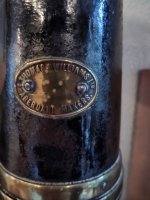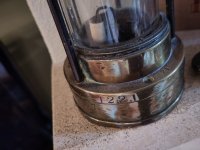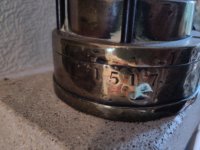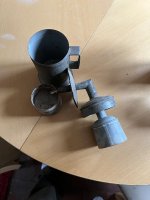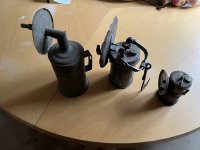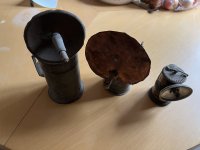There are some superb groups on Facebook with folks who know a great deal. I know one of the Goodluck chaps is also very knowledgable, just cannot remember his name atm!
I don't think this is a special lamp in this case, probably worth £40-60 or so but it's a nice bit of history and it at least looks like an original lamp, not a souvenir.
If it does not have a lock (although it may have been de-activated) it would not have been allowed underground in coal or other gassy mines...
Now do not let anyone tell you this uses naptha fuel - Every lamp that I have seen with a spark-ignitor (The porcelin and bent metal wire) uses parafin (oil based). They also seem to use flatwicks although I have one exception that is oil and round, and I have been told there have been flat wicks that burn naptha, but these alternatives seem rare. Most round wicks use Naptha (known to miners as Coalazine, zippo fuel or even panel wipe cleaner to us!). You will find that Naptha burns with a very unstable flame on flatwick lamps and as the fuel vessel does not contain any wadding it can be dangerous to use!
These oil lamps were more about light than testing, although of course they would have indicated bad air, just not to the sensitivity that the Eccles protector would have been used.
One thing that has always puzzled me though - the use of HV spark to light oil. All Naptha lamps used either low voltage filaments or flint strike to light the lamps. I have never seen a spark gap used to light naptha. Nearly ALL oil based lamps seem to use HV spark, which is at odds with oil having quite a high flash point. Only way I have managed to achieve lighting a lamp is by adding a few drops of naptha fuel to the wick to get things going... I would love to know if anyone can give us a clue as I have not yet met a single collector who knows anything about lighting them!
I can summise that they used a HV magneto to generate the spark though, as I have a picture of a miner using one somewhere.
Here is my MC40 that I lit the "traditional way". It looks like a standard protector but is in fact oil based and was a one-off design for Manchester Collieries, so did not use a striker and would have been lit in the lamp room.




